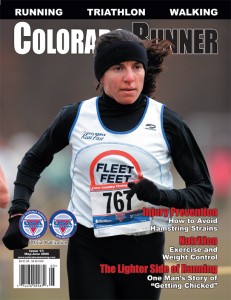 It’s that time of year again. The temperatures are soaring, the sun is shining, and the snakes are crawling over the trails we love to run! It is common to find garter snakes, bull snakes, racers, and the dreaded rattlesnakes on Colorado’s trails. To avoid a close encounter of the slithery kind, the park rangers at Ken Caryl Open Space in Jefferson County offer these simple precautions.
It’s that time of year again. The temperatures are soaring, the sun is shining, and the snakes are crawling over the trails we love to run! It is common to find garter snakes, bull snakes, racers, and the dreaded rattlesnakes on Colorado’s trails. To avoid a close encounter of the slithery kind, the park rangers at Ken Caryl Open Space in Jefferson County offer these simple precautions.
Snakes are most active at temperatures between 50 and 80 degrees Fahrenheit, so if you run in cooler or hotter temperatures, you reduce the likelihood of encountering snakes. When you are climbing and crawling over rocks, don’t put your hands or feet where you can’t see. If you do encounter a snake, back away slowly and give it a chance to escape.A coiled snake is not necessarily aggressive. This is a defensive pose. So, if left alone, they usually will not strike.
Here are some interesting snake facts:
* Snakes are not slimy, but have dry skin.
* A rattlesnake can strike a distance of approximately one third of its body length.
* Snakes can not jump.
* Snakes are true hibernators and are most active in late April through late October along Colorado’s Front Range.
* Less than 10% of all snakes have venom that’s capable of harming people.
* When snakes stick out their tongues, they are smelling by picking up particles from the air.
If you do get bitten by a snake, slowly move away from the snake so it can’t bike again. Seek medical help as soon as possible.
Happy trails!
Derek

